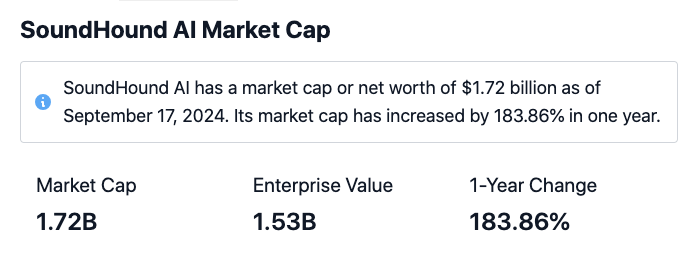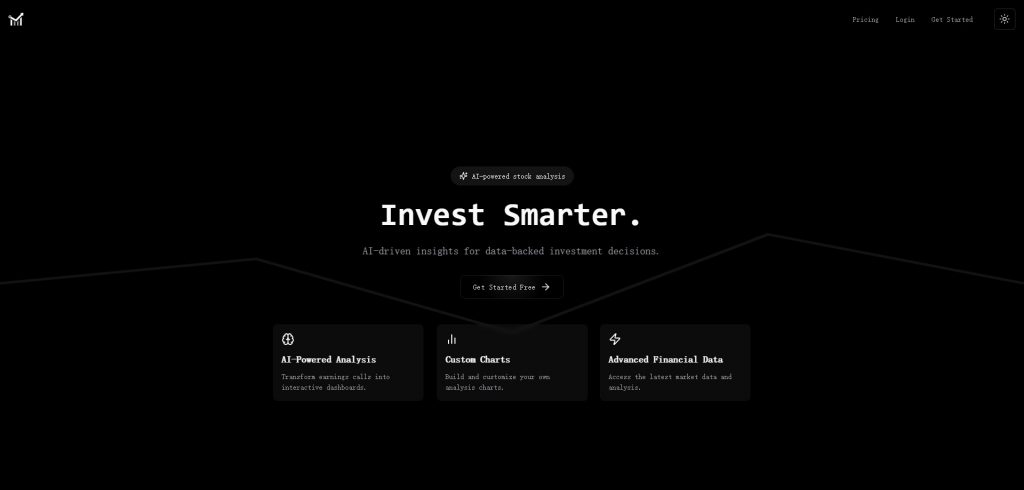20 Recommended Pieces Of Advice For Deciding On AI Stock {Investing|Trading|Prediction|Analysis) Websites
20 Recommended Pieces Of Advice For Deciding On AI Stock {Investing|Trading|Prediction|Analysis) Websites
Blog Article
Top 10 Tips For Assessing The Price And Cost Of Ai Stock Trading Platforms
Assessing the cost and pricing of AI analysis and stock prediction platforms is essential to ensure that you get the most from your investment without incurring hidden costs or unexpected expenses. Pricing structures differ widely, and it is crucial to understand what you're getting for your money. These are the top 10 tips for evaluating cost and price:
1. Understanding the Pricing Model
Subscription based: Find out if the platform charges monthly or annually and the features that each tier offers.
Pay-per-use : Verify that the platform's charges are based on the amount of usage (e.g. transactions, requests for information or forecasts).
Freemium model - Check whether there's a no-cost version that has limited features as well as a paid version with the premium features.
2. Compare Pricing Tiers
Compare the features of each price level, e.g. Basic, Professional Enterprise, and Basic.
Scalability: Make sure the pricing levels align with your needs, regardless of regardless of whether you're a solo trader or professional.
Upgrade flexibility - Check for options to easily upgrade or downgrade it if your needs alter.
3. Evaluate Hidden Costs
Data fees: Check if the platform charges extra access to premium data (e.g. real-time data, advanced analytics).
Brokerage fees: Check if the platform charges additional fees for trade execution or integration with brokers.
API use: Find out if you will be charged additional fees for high frequency API usage or API access.
4. Demos and Free Trials, and Test Drives
Trial period: Look for platforms which offer the option of a trial or demo so you can test the features before you commit.
Limitations of the trial: Check if the trial includes all features or if it has limitations in terms of the functionality.
There are no-commitment options. Ensure that you have the option to cancel your trial without being charged if the platform doesn't meet your needs.
5. Look for discounts and promotions.
Annual discounts Find out what you can avail as an annual discount plan when compared to monthly plans.
Referral Programs: Find out if your platform offers discounts or credit to customers who refer other users.
Institutional pricing If you're part of an enterprise, inquire about bulk or institutional pricing.
6. Evaluate Return on Investment (ROI)
Cost vs. Value: Decide if the capabilities and forecasts of the platform justifies the cost. Does it, for example will help you make a better decisions in trading or help you help you save time.
Examine the platform's performance and user reviews in order to estimate its potential return on investment.
Costs of alternative platforms: Compare the cost of the platform with the possible cost of not making use of it (e.g. missing opportunities, manual analyses time).
Review Policies on Cancellation and Refunds
Terms of cancellation: Make sure you are able to make a cancellation without hidden costs or penalties.
Review the refund policy to determine what you can claim as a refund for any unredeemed subscription portion.
Auto-renewal: Check that the platform is automatically renewing your subscription, and how you can remove yourself from the subscription.
8. Assess Transparency in Pricing
Clear pricing page: Make sure that the platform offers a pricing page which is detailed, clear and does not contain any hidden fees.
Customer Support Contact customer support to clarify any unclear pricing details or any additional charges.
Contract Terms: Check the terms of service for any penalties or long-term agreements.
9. Check out your competition
Comparison of features Comparing the prices and features offered by the platform to its rivals to make sure you're getting the best deal.
User reviews: Research reviews from users to determine if others feel that the platform is worth the price.
Market positioning: Examine the prices and determine if you are getting a platform that is within your budget.
10. Evaluate Long-Term Costs
Price increases: Find out whether there is a consistent pattern of price increases and how often they occur.
Additions to features: Check whether you have new features in your current plan, or require an upgrade.
Scalability cost The platform needs to be priced appropriately in the event that your trading or data requirements rise.
Bonus Tips:
Test multiple platforms. You can try multiple platforms for free and compare them.
Negotiate the price: If you are frequent users or part of a large institution You can inquire about discounts or special pricing.
There are many platforms that offer educational tools and resources for free.
Utilize these suggestions to determine the costs and prices for AI platform for analyzing and predicting stocks. Pick one that best meets your requirements and is with your budget. A well-balanced platform will provide you with the best of both worlds cost and performance. Read the most popular trader ai intal advice for site tips including best ai stock trading bot free, using ai to trade stocks, best artificial intelligence stocks, ai for trading, ai stock market, free ai trading bot, coincheckup, ai trading platform, chart ai for trading, copyright advisor and more.
Top 10 Tips For Assessing The Transparency Of Ai Stock Predicting/Analysing Trading Platforms
Transparency is an important aspect to consider when looking at AI trading and stock prediction platforms. Transparency allows users to be sure of the operations of the platform, make the decisions made, and validate the accuracy of predictions. Here are the top 10 tips for assessing the authenticity of these platforms:
1. The AI Models are explained in simple terms
Tips - Make sure that the platform provides a thorough description of the AI and algorithmic models that are used to predict the future.
Why: By understanding the technology, people can determine its reliability and limitations.
2. Disclosure of Data Sources
TIP: Ensure that the platform is transparent about the data sources that it uses.
What do you know: By understanding the sources of information will help you ensure that the platform is using reliable and comprehensive data.
3. Performance Metrics, Backtesting, and Results
TIP: Ensure that there is transparent reports of performance metrics (e.g. accuracy rates, ROI) and results from backtesting.
How do users determine the efficacy of the platform by analyzing its previous performance.
4. Updates and notifications in real-time
Tip: Check if you are receiving real-time alerts as well as updates regarding the system's trades, predictions or any modifications to the system.
Why is this? Real-time transparency enables users to be aware of every critical action.
5. Limitations The Open Communication
Tips Make sure the platform is clear about its risks and limitations regarding forecasts and trading strategies.
What's the reason? Recognizing the limitations of a product can build trust, which helps customers make better informed choices.
6. Access for users to raw Data
Tip: Determine if the AI model can be utilized to access raw data as well as intermediate results or both.
Why is this: Raw data can be used to confirm predictions and conduct analysis.
7. Transparency about fees and charges
Tip: Ensure the platform clearly describes the costs for subscriptions, fees as well as any hidden charges.
The reason: Transparent pricing avoids cost-insane surprises and helps build confidence.
8. Regular report and audits
Find out if the platform produces regular reports, or undergoes audits by third parties to check its effectiveness.
The reason: Independent verification improves credibility and accountability.
9. The ability to explain predictions
Tip: Check if the platform offers information about how recommendations or predictions (e.g. feature importance or decision tree) are made.
Why: Explainability can help you understand AI-driven decisions.
10. User feedback and support channels
Tip: Evaluate whether the platform offers an open channel for user feedback and support, as well as whether it is able to respond in a transparent manner to concerns of users.
Why: Responsive communication demonstrates the commitment to transparency as well as the satisfaction of users.
Bonus Tip: Regulatory Compliance
Check that the platform is in compliance and is transparent regarding its compliance with financial regulations. This provides another layer of trust and transparency.
Through analyzing these features, you can decide whether or not an AI trading platform and stock prediction are transparent. Then, you will be able to make well-informed decisions and gain confidence in its capabilities. See the best free ai tool for stock market india url for blog advice including ai options trading, ai for trading, ai stock picks, ai copyright trading bot, best artificial intelligence stocks, ai stocks to invest in, best ai trading software, best ai stock, ai trading app, trading chart ai and more.